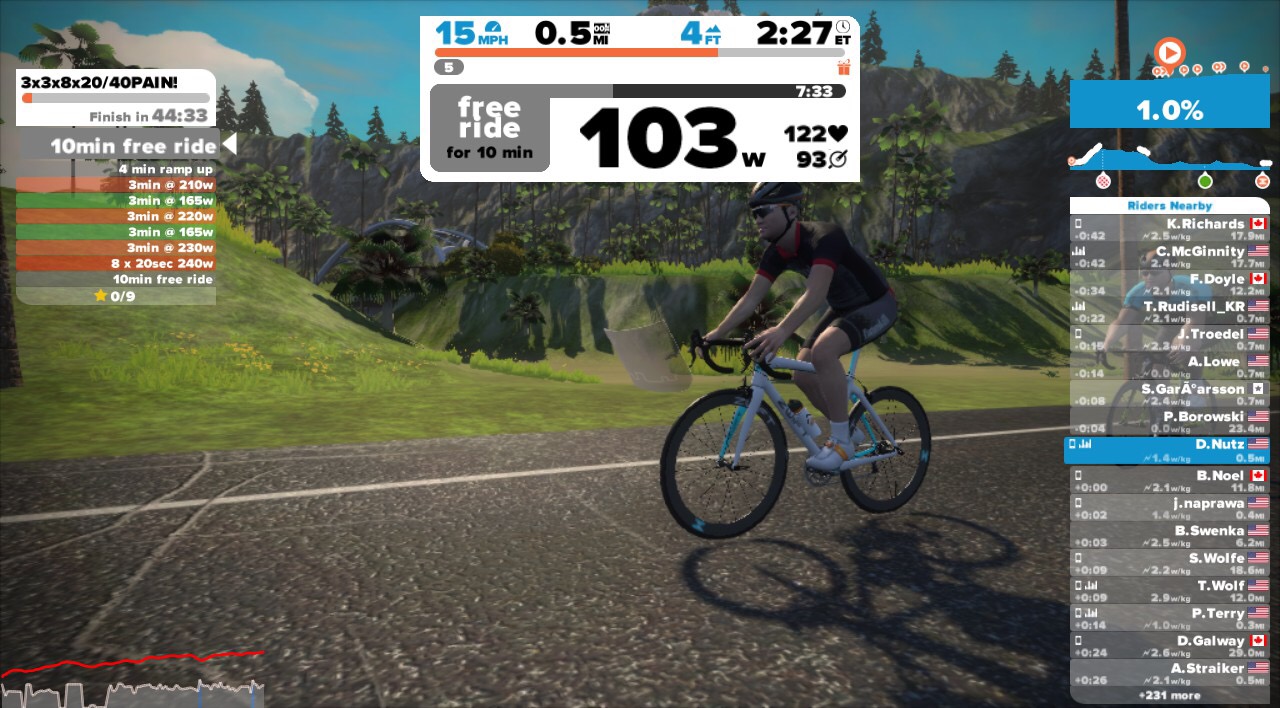Zwift training is a hot new form of indoor training that has people excited. In a nutshell, Zwift training allows you to sit on a trainer in your living room and ride in a virtual environment with people from all over the world who are doing the exact same thing.
How cool is that?
In previous videos, I discussed how to include some Fartlek training in your Zwift training sessions and how to use the new workout builder to create a custom workout in Zwift. In this video, I'm going to explain and demonstrate how to roll a climb. This kind of skill work is a perfect use of your Zwift training time because it's hard to understand how to execute it properly without being out on the road. Fortunately, Zwift is the perfect virtual road to demonstrate on.
Check out the video below and then read on for some additional tips to help get a little more out of your Zwift training session.
Tips for adding “rollovers” to your Zwift training
If you want to get the most out of your Zwift training, you'll need to do something more than just jumping on your bike and riding around. Sure, Fartlek training with Zwift is pretty easy and it doesn't require much thought. That ignores the fact that Zwift is the perfect platform for working on your fundamentals. You can add some rollover work to your training each time you log into Zwift and when you head outdoors, you'll find that rolling climbs is almost second nature.
To add rollovers in Zwift, you'll need to follow a few simple guidelines:
You can practice rollovers on any climb or hill, not just the timed ones (although these timed climbs are perfect because you'll have a good idea of how long the climb will be and you can dose your effort accordingly.)
- Start your climb at a sustainable pace, around FTP or just a little over.
- About half way through the climb, ratchet up the pace another 10% or so and push a bit harder.
- With about 90% of the climb done, accelerate again to about 150% of FTP to get to the crest of the climb.
- Sit down, shift to an easier gear and start spinning a big gear as you fly down the back of the climb.
- Maintain that fast cadence for 15 to 20 seconds to condition your body and get it used to working hard after the climb is over.
You'll see yourself flying past other people who soft-pedaled or coasted down the descent. As I mentioned in the video, this technique will annoy the skinny climbers in your weekly group ride or in a race. It's the perfect way to level the playing field if you've got extra muscle mass you can leverage on a flat or downhill section. Even if a better climber puts 100 meters into you by the crest of a climb, if you roll it over and they don't, you'll find yourself back on their wheel in no time.
Don't forget that you can use this technique when there's a false flat after the crest of a climb, too. It's also a great tool to use for repeated rollers: the momentum you gain down the back of each roller will help you to punch up the next one much easier. And it goes without saying: the more you practice this technique, the more automatic it becomes and the more you'll use it outdoors.
Want to get involved in some training on Zwift? You'll need a couple of things: an
